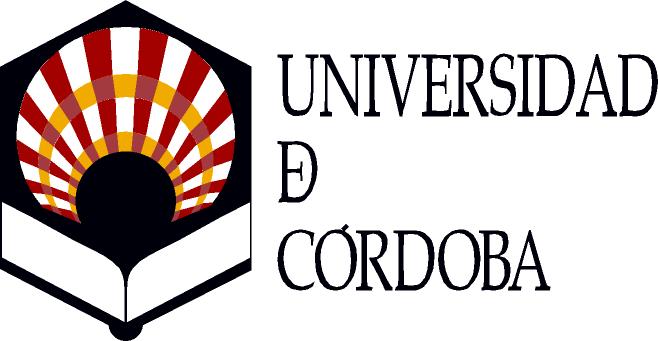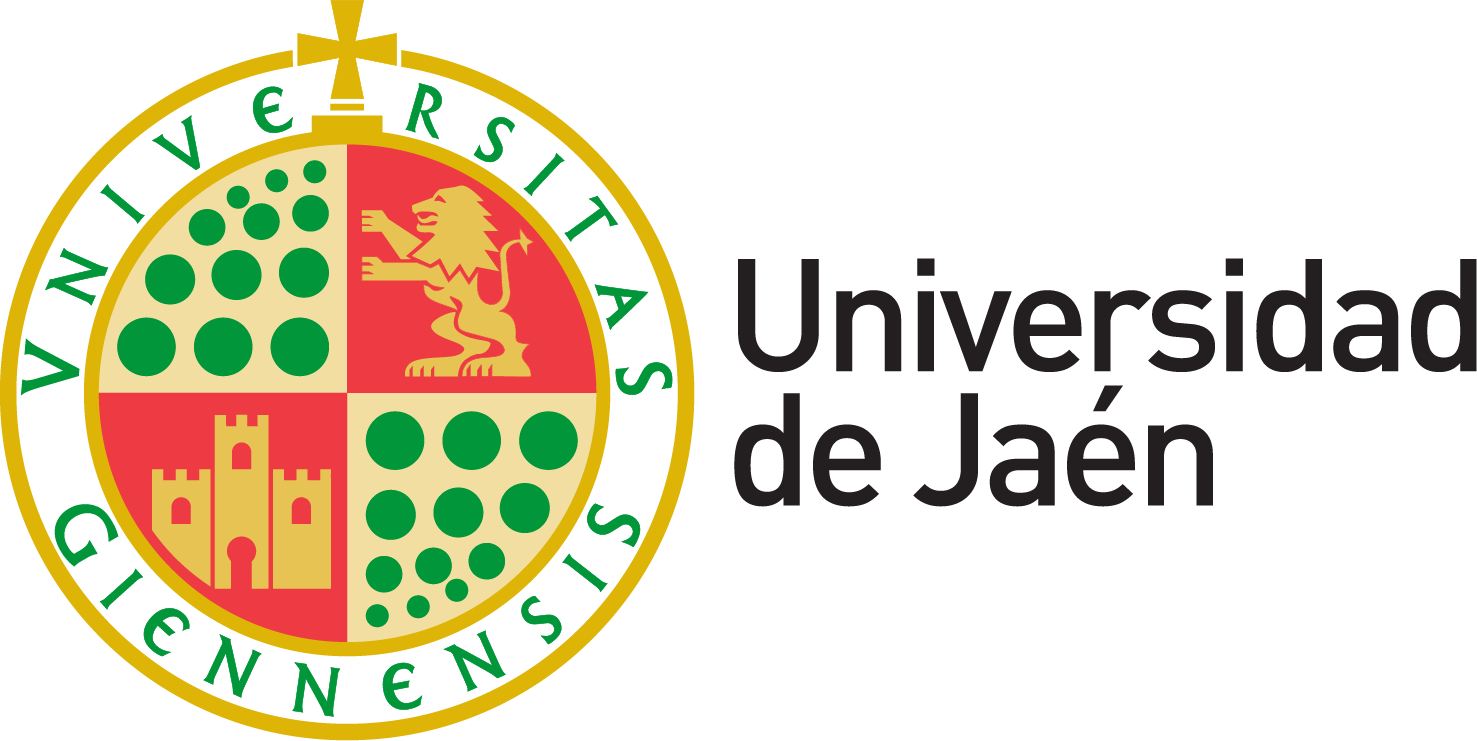Master programmes
GRANADA
Master programmes
- Interuniversity Master in Environmental Hydraulics
This program aims to deepen and research training and professional advanced specialized and multidisciplinary nature in the field of engineering and the management of natural resources.
The first half is entirely developed in the University of Granada. Its objective is to provide the student with basic knowledge and fundamentals of environmental hydraulics. The second half takes place in each of the participating universities according to the specialization chosen by the student, and its objetive is to provide the development of personal skills and deepening of knowledge in the field of environmental hydraulics.
Participating universities
University of Granada (UGR) – Coordinator of the title
University of Cordoba (UCO)
University of Malaga (UMA)
Specialties
E1. Integrated management of ports and coasts, CEAMA-UGR
E2. Integrated management of watersheds, UCO
E3. Aero-hydrodynamics of vehicles, UMA
E4. Management of aquatic ecosystems, UGR
http://masteres.ugr.es/hidraulicaambiental/
- Official Master in Geophysics and Meteorology
The Master of geophysics and meteorology aims to provide the students with a basic and methodological training in geophysics and meteorology that allows them to both their initiation in research in related topics and their incorporation into companies that require specialists in various fields of application of geophysics and meteorology. Training in these fields, in which noted a huge training gap at the national level, is directed both to researchers as to technicians who will be dedicated to develop their professional work in fields such as fire prevention, the impact of agricultural planning, weather forecasting, climate change, water management, energy resources wind and solar seismic and volcanic prevention and the application of geophysical methods for exploration geological, archaeological or engineering field, etc.
Taught a course in IISTA:
- Advanced techniques in remote sensing of aerosol
- Remote sensing, GIS and GPS
http://masteres.ugr.es/geomet/
- Official Master in Conservation, Management and Restoration of Biodiversity
This Master’s degree is inscribed as a development of graduate studies of biology, environmental sciences and other grades of experimental and technical sciences of similar characteristics.
This Master aims to bring closer the vision of the international programme DIVERSITAS UNESCO student graduadolicenciado that I may learn to know, value and manage the biological resources we have consistently, encompassing from the basics with a more academic and scientific, to aspects of applied and professional interest.
The four axes of knowledge and action proposed in this Master are:
1. knowledge of the evolution of biodiversity in space and in time to reach the current state.
2. transfer of scientific knowledge to managers and restorers of natural spaces and the politicians.
3. knowledge of how it is changing the existing biodiversity, in good part by the action of human activity, and how it can affect the functioning of the Earth System.
4. awareness of the economic value of natural resources, the services provided by ecosystems and their sustainable use.
Taught a course in IISTA:
- Ecoinformatics.
http://masteres.ugr.es/biodiversidad/pages/master
CORDOBA
- Interuniversity Master program in Culture of Peace. Conflicts, Education and Human Rights funded by UNESCO.
Its main objective is to train qualified students for the analysis and understanding of present realities and the construction of peaceful futures, providing them with competent intellectual resources to advise institutions and organisations that require it. It is an interdisciplinary degree, which will be taught over an annual academic period.
Participating universities
- University of Cordoba (UCO)
- University of Granada (UGR)
- University of Cádiz (UCA)
- University of Malaga (UMA)
https://www.uco.es/idep/cultura-de-paz
- Master in Environmental Management and Biodiversity
The Master’s Degree in Environmental Management and Biodiversity at the University of Cordoba is a SEMIPRESENTIAL programme and aims to cover, through its three specialisations (Environmental Management, Biodiversity and Sustainable Use of Natural Resources), the demand for technicians who can handle different technological tools for environmental management and quality, environmental planning and prevention, detecting problems and opportunities related to the use and conservation of the environment, the analysis of the main tools for the management and conservation of biodiversity, as well as the application of new energy sources, waste management and energy efficiency. It is also integrated in the Doctoral Programme in Natural Resources and Sustainable Management of the University of Cordoba.
https://www.uco.es/idep/master-gestion-ambiental-y-biodiversidad
- Master in Heritage Management from the Municipality
The three itineraries it consists of (Municipal policies and facilities, Enhancing the value of heritage and Natural heritage and environmental quality) have the fundamental objective of training students to address the analysis of heritage in the territory in order to establish appropriate strategies to preserve and enhance it, responding to the professional profile of the Heritage manager in Europe, one who in an urban or rural territory, with tangible heritage – movable, immovable or natural – and intangible, is part of or coordinates the team of managers involved in the reflection and practical application to preserve and enhance it; whose professional orientation is focused on the analysis of the resources of the territory and on proposing/participating in the implementation of a policy for their development that ensures their valuation and transmission to future generations, applying the acquired knowledge of analysis of the potential of heritage, its use as a factor of development, conservation, dissemination, interpretation, marketing and communication, which allows him/her to participate/coordinate the team in charge of implementing the cultural/heritage policy of the territory.
https://www.uco.es/estudios/idep/gestion-patrimonio-municipio
- Professional Master in Forestry Engineering
In the current context in which forest areas are developed, characterised to a large extent by the degradation of soils and natural sites due to intense and old exploitation, forest fires and environmental pollution, as well as the emergence of new activities in the natural environment, such as rural tourism or the use of forests as a source of clean and renewable energy, gives a strategic character to the optimisation of natural resources in the forests, where this speciality plays an important role. The training of professionals in this field must evolve to adapt to new circumstances in order to be able to respond effectively to the new functions that 21st century society demands of forestry areas. These new social demands include the need to compensate for climate change, defend the soil, maintain and restore water balances, ensure the continuity of species of flora and wildlife, improve the environment and obtain forest raw materials, both for processing by industry and for direct enjoyment. All this justifies the territorial, environmental, social and economic relevance of forest assets.
http://www.uco.es/agronomia/en/master-s-degree-in-forest-engineering
JAEN
- Master in Mechatronics Engineering
The Master’s Degree in Mechatronics Engineering at the University of Jaén is an official postgraduate degree in high demand in the industrial environment and with excellent employment prospects. Its main objective is to train professionals with multidisciplinary knowledge in technologies such as control, mechanics, electricity, electronics and computer science, enabling them to overcome the engineering challenges posed by modern mechatronic devices. The master’s programme includes the best methods of integral product or process design with the aim of making it more compact, lower cost and with added value in its functionality, quality and performance.
- Professional Master in Industrial Engineering
The Master’s Degree in Industrial Engineering includes all the competences necessary to acquire the professional attributions of the regulated profession of Industrial Engineer. The Industrial Engineer is a professional with a long tradition and prestige in Spain who, unlike other more specific technical professions, has a multidisciplinary background that allows him/her to tackle problems of a diverse nature.
https://eps.ujaen.es/masteres-oficiales/master-universitario-en-ingenieria-industrial
MASTER’S THESIS
- Numerical study of the transient solutions of the flow with buoyancy between two horizontal concentric cylinders with non-uniform heating. Lucía Medina Jiménez (UGR)
2. Analysis of the accuracy of Earth Observation Products derived from satellite images applied to the study of Coastal Erosion in United Kingdom. María Victoria Paz Delgado (UGR)
3. Riesgo ambiental asociado al vertido de un emisario submarino en la costa de Granada. José Antonio Cerón Gutiérrez (UGR)
4. Reviewing the relationship between suspended sediment and chlorophyll-bearing primary
5. producers in an intertidal estuary. Michael Joshua Hernandez (UGR)
6. The effect of turbine characteristics on the Thermodynamics and compression process of a simple OWC device. Ángel Molina Salas (UGR)
7. Estudio de la gestión de capacidad del Puerto del Almería. Ignacio Moreno Zapardiel (UGR)
8. Influencia de la estratificación y la capa límite de fondo en el modelo clásico de Ekman. Viviana Paola Santander Rodríguez (UGR)
9. Estudio experimental del comportamiento hidráulico y características del flujo en un dique de abrigo homogéneo. Zhang Xingweng (UGR)
10. Analysis and level of development of Croatian Sea ports. Dario Zukic (UGR)
11. Influencia de la nieve en la respuesta hidrológica de las cuencas del río Genil: Implicaciones para la gestión. Miguel Antonio Moreno Román (UGR)
12. Influencia del piornal en el intercambio de energía entre la capa de nieve y el suelo. Pedro Pérez Serrano (UGR)
13. Modelo idealizado para la localización de microplásticos flotantes en el río Genil a su paso por la cuidad de Granada: análisis de sensibilidad frente a forzamientos. Juan Carlos Estévez (UGR)
14. Efectos de diferentes alternativas de arrecife artificial multifuncional sobre el Monumento Natural Dunas de Artola y playa de Artola (Marbella). Antonio García Millán (UGR)
15. Análisis del impacto de dispositivos de aprovechamiento energético del oleaje tipo columna de agua oscilante (OWC) en la costa de “El Rompido” (Huelva). José Pablo Martínez García (UGR)
16. Análisis de la evolución de la línea de costa mediante imágenes de satélite. Marcus Silva de SantAna (UGR)
17. Intercambio de gases de efecto invernadero en una laguna endorreica durante la época de sequía: efecto de la sal. Isabel López Cánovas (UGR)
18. Propagación de ondas de presión y detección sísmica del meteoroide de Granada 2016. Josué Casado Rabasco (UGR)
19. Caracterización de partículas de aerosol atmosférico en el entorno de las estaciones FLUXNET del sur de la Península Ibérica mediante la misión satelital CALIPSO. David Donaire Montaño (UGR)
20. Técnicas de Machine Learning aplicadas a la capa límite atmosférica en un entorno rural. Elena Sánchez Ruiz (UGR)
21. Análisis de perfiles verticales de aerosol en atmósfera rural mediante el algoritmo GRASP. Aitor Bereinkua Gonzalez (UGR)
22. Análisis estadístico de las propiedades microfísicas y radiativas del aerosol atmosférico a partir de medidas de las redes IceNET y AERONET. Bazo Gonzáles, Elena (UGR)
23. Efectos de las masas de aire en los perfiles de temperatura y humedad en el sudeste de la Península Ibérica. Belén Rico Bordera (UGR)
24. Proyecciones de cambio climático en Sierra Nevada. Teresa Solana Sancho (UGR)
25. Estudio experimental de sistemas flexibles de mejora aerodinámica y captación de energía. José Carlos Muñoz Hervás (UJAEN)
26. In-vitro experimental characterization of the Lagrangian solute transport in the spinal canal. Francisco Moral Pulido (UJAEN)
27. Evaluación del recurso eólico en Sierra del Trigo (Jaén) a partir de datos de viento medidos y procedentes del reanálisis meteorológico ERA‐5. Castro Yanayaco, Annel Marisol (UJAEN)
28. Desarrollo de un modelo de generación de energía solar PV para Castilla la Mancha. Jaime Gálvez Romero (UJAEN)
29. Efecto de la elevación de CO2 y temperatura en la fisiología y valor reproductivo de líneas diploides y poliploides del complejo Brachypodium distachyon (Poaceae): una aproximación experimental de simulación de cambio climático. Ana Isabel Rodríguez Ortiz (UJAEN)
30. Caracterización de la capacidad dispersiva de hierbas anuales del olivar. Una aproximación mediante modelos mecanicistas y túnel de viento. Victor Valenzuela Polo (UJAEN)
- Cuantificación de flujos de CO2 bajo el dosel arbóreo en un olivar . Ángel José Callejas Rodelas.
- Caracterización de chorros de bajo nivel (Low-level jets) y la turbulencia asociada mediante lidar Doppler. Juana Andujar Maqueda.(UGR)
- Puesta a punto de un nefelómetro polar basado en imágenes CCD para el estudio del aerosol atmosférico. Julio Miguel Calero López (UGR).
- Estudio de implantación de un parque híbrido eólico-undimotriz en la costa andaluza. Máster de Hidráulica Ambiental. Ayatima González Felipe (UGR).
- Revision of formulas for run-up and run-down in a slope. Miguel Santamaría Cervantes (UGR).
- Proyecto constructivo del puerto deportivo La Caleta de Salobreña. Marcos Bayo Jiménez (UGR).
- Proyecto de construcción de ampliación del puerto de Garrucha. Pablo Magán Martínez (UGR)
- Cartografía del contenido de humedad del combustible vivo en la cuenca del Mediterráneo usando Randomo Forest y datos espectrales y térmicos del sensor MODIS. Àngel Ramon Cunill Camprubí.
- Modelos integrados de índices de los sensores ALOS-Landsat para la estimación de biomasa en pinares mediterráneos. Edward Alexander Velasco Pereira (UCO).
- Sistemas inteligentes a tiempo real para la extinción de grandes incendios. Estudio del incendio Almonaster la Real. Rafael Zumaquero Torres (UCO).
- Delineación de árboles individuales de Abies pinsapo a partir de datos LiDAR: una comparación de enfoques de segmentación para bosques irregulares. Rosa María Sánchez Jiménez (UCO).
- Sequía y escasez en la cuenca del Guadalquivir. Janney Ortiz Espoz (UCO).
- Determinación experimental de secciones eficaces de extinción por nanoesferas de aerosol. Francisco José García Izquierdo (UGR).
- Evaluación del recurso eólico en sierra del trigo (Jaén) a partir de datos viento medidos y procedentes del reanálisis Meteorológico ERA-5. Annel Marisol Castro Yanayaco (UJAEN).
- Diseño e Implementación de Instalación Solar Fotovoltaica sin Excedentes en El Campus de la Unia de La Rábida, Integrada en los Elementos Arquitectónicos. Gabriela Leiva Carballeira (UAJEN).
- Puesta a punto de un nefelómetro polar basado en imágenes CCD para el estudio del aerosol atmosférico. López Calero, Julio Miguel (UGR).
- Cámara hipobárica con control climático amiston CHCC21 y uso en el estudio de la evolución de los flujos de CO2 y agua en plantas de tomate sometidas a diferentes gradientes de CO2, temperatura y presión atmosférica. Martínez Moreno, Javier (UGR).
- Análisis de eventos de polvo Sahariano en la ciudad de Granada mediante teledetección pasiva. Cuesta Navarro, Antonio (UGR).
- Análisis de la distribución de polen en el sur de la Península Ibérica mediante técnicas in-situ aerobiológicas, modelización y teledetección. Álvarez Monedero, Belén (UGR).
- Fuentes de contaminación atmosférica por partículas de aerosol en Granada. Zabala Arana, Inés (UGR).
- Comparación de las salidas a ultra alta resolución del modelo climático regional WRF en España y en Andalucía. Cepeda Ventura, Luna (UGR).
- Efecto del clareo y sus residuos sobre la emisión de gases de efecto invernadero en suelos de pinar y robledal del Parque Nacional de Sierra Nevada. Valverde Amor, Ángela Lucía (UGR).
- Análisis del flujo sobre cuerpos romos. Rodríguez Zamorano, Javier (UJAEN).
- Diseño y Análisis de Prototipos a Escala Real de Sistemas Pasivos de Mejora Aerodinámica en Camiones. Camacho Sánchez, José Manuel (UJAEN).
- Caracterización de la dirección del transporte turbulento de flujos cinemáticos de CO2, calor y vapor de agua. Isidro Tejera, Marcos (UGR).
- Caracterización atmosférica de la erupción del Cumbre Vieja de 2021: teledetección satelital y desde superficie. Muñiz Rosado, Jorge Andrés (UGR).
- Evaluación de las condiciones atmosféricas sobre la productividad del ecosistema. Lago González, Pedro (UGR).
58. La Aerobiología como herramienta para el estudio de la Biodiversidad. Mª Carmen Castro Díaz (UCO).



